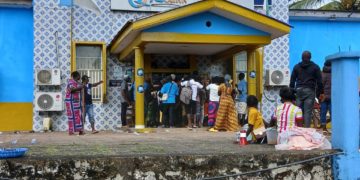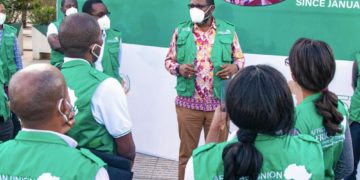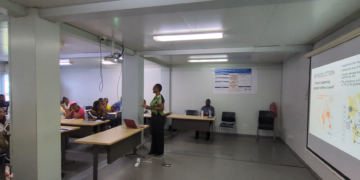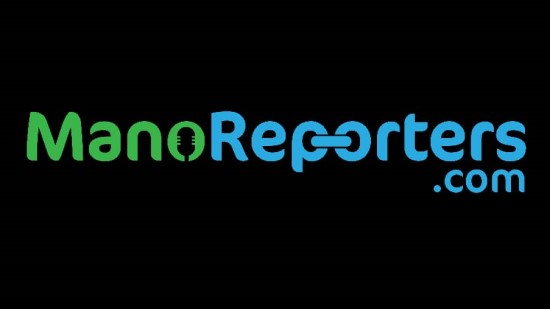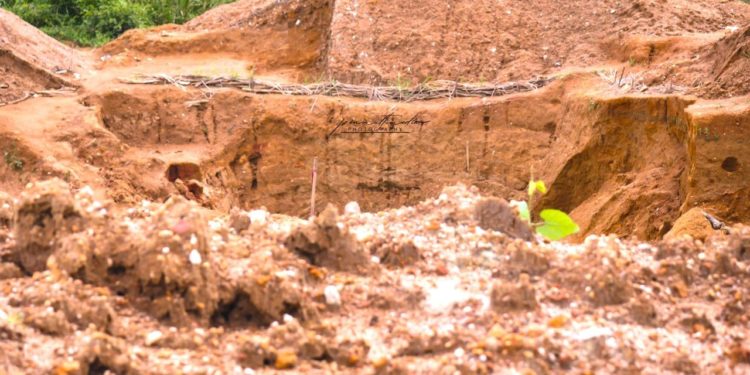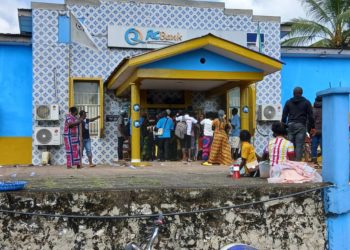By Davida Spaine Solomon
A Land of Riches, A People in Struggle
The rhythmic hum of machines echoes through the hills of Kono. Beneath the sweltering Sierra Leonean sun, men dig tirelessly, their hands caked in dirt, their bodies hardened by years of labour. Among them is Foday, a 34-year-old miner whose life has been shaped by the land he works on.
“I have been in the mines since I was a teenager,” he tells me, wiping sweat from his brow. “The minerals we extract are worth millions, but we barely see enough to survive. The companies come, they take, and they leave little behind.” Foday’s story is not unique. Across Sierra Leone, thousands of miners toil under gruelling conditions, extracting resources that fuel global industries but do little to improve their own lives.
In Kono, where diamonds have been mined for over 90 years, one would expect prosperity. Instead, most residents live in poverty, struggling to afford basic necessities. The district remains one of the least developed in the country, a cruel irony given the immense wealth extracted from its soil.
According to Statistics Sierra Leone (2022), the poverty rate in Kono is above 70%, with many families relying on subsistence farming or artisanal mining to survive. Until 2022, most of Kono did not even have access to electricity, despite decades of diamond mining in the region. Only after intense advocacy did the government extend power to parts of the district, leaving many to ask: how can a place so rich remain so poor?
The Global Scramble for Critical Minerals:
For decades, Sierra Leone has been known for its diamonds and gold. But today, the world’s attention is shifting to a different kind of resource – critical minerals. These include lithium, cobalt, and graphite, which are minerals essential for electric vehicles, renewable energy, and modern electronics.
The demand for these minerals has surged as countries in the Global North seek to transition to cleaner energy. Reports from the International Energy Agency (IEA) indicate that the demand for lithium alone is projected to grow more than 40 times by 2040 due to its importance in battery technology (IEA, 2022). African countries, including Sierra Leone, have become central to this race, with China, the U.S., and the EU all investing heavily in the continent’s resource extraction.
A 2023 report by The Wilson Center highlights that China dominates the global supply of critical minerals, controlling nearly 60% of global rare earth processing and over 70% of cobalt refining, much of which is sourced from Africa (The Wilson Center, 2023). In Sierra Leone, Chinese and Western companies alike have expanded their mining activities, yet local benefits remain minimal.
Who Truly Benefits?
Despite the wealth extracted from its soil, Sierra Leone remains economically vulnerable. The Extractive Industries Transparency Initiative (EITI) reported that while mining contributed 24% of government revenues in 2022, this has not translated into significant improvements in infrastructure, education, or healthcare (EITI Sierra Leone, 2023). Instead, multinational corporations often repatriate profits rather than reinvesting in the country.

A study by the Natural Resource Governance Institute (NRGI) found that weak regulatory frameworks and unfavourable contracts result in less than 10% of the true mineral value staying in Sierra Leone, with the rest benefiting foreign investors (NRGI, 2022). The reality on the ground reflects these numbers.
In Koidu, a once-thriving farming community, mining activities have led to severe deforestation and water pollution. Streams that once provided clean drinking water now run murky with mining waste. Farmers struggle to cultivate their land due to soil contamination, their livelihoods threatened by an industry they have no control over.
Dr. Mariatu Jalloh, an environmental scientist, has seen firsthand the consequences of unregulated mining. “Our land is being stripped of its resources, but at what cost?” she asks. “The government must enforce stronger policies to protect communities while ensuring that Sierra Leone benefits from its minerals.”
Laws Meant to Protect, but Are They Effective?
Recognizing the need for better governance, Sierra Leone has taken some legislative steps to regulate the mining industry and protect its people. Key policies include:
•The Mines and Minerals Act (2009): This law was designed to ensure that mining contributes to national development while safeguarding environmental and social interests. However, weak enforcement and loopholes have allowed companies to exploit resources without significant contributions to local communities.
•The Environmental Protection Agency (EPA) Act (2008): This act mandates that mining companies conduct environmental impact assessments before operations begin. However, reports from Green Scenery, an environmental watchdog, indicate that many companies either bypass this process or fail to implement proper mitigation measures.
•Local Content Policy (2018): Aimed at increasing employment opportunities for Sierra Leoneans, this policy requires mining companies to prioritize hiring locals. Yet, many firms continue to import foreign labour, arguing that the local workforce lacks specialized skills. Despite these efforts, corruption, lack of oversight, and corporate influence have hindered the effectiveness of these laws. Without strict enforcement, these policies remain paper tigers, failing to protect those who need them most.
The Paradox of Mining Towns: Lessons from Marikana
Kono’s story mirrors that of Marikana, a small mining town in South Africa that sits on the country’s platinum belt. In 2012, Marikana became infamous for the massacre of 34 miners who were protesting low wages and poor working conditions at a platinum mine operated by Lonmin.
Despite the vast wealth generated from the platinum industry, Marikana remains deeply impoverished, lacking basic infrastructure and economic opportunities. Like Marikana, Kono’s people have laboured for generations without reaping the rewards. The stark inequalities between mining corporations and the communities they operate in raise the same pressing questions: Who truly benefits from these resources? Why are mining towns often the poorest?
Rethinking Mining: A Path to Sustainable Development Some African countries have found ways to turn their mineral wealth into national progress. Botswana, for example, has successfully negotiated deals that ensure mining profits are reinvested in infrastructure, education, and healthcare. Sierra Leone can follow suit, but it requires bold reforms:
Stronger regulatory frameworks to prevent exploitation and environmental destruction.
•Local content policies that mandate companies to hire, train, and empower Sierra Leoneans.
•Investment in value addition instead of exporting raw minerals, the country must build industries that refine and manufacture products locally.
•Transparent revenue management to ensure mining profits benefit all citizens, not just a privileged few. If Sierra Leone gets this right, it could set a precedent for Africa a future where minerals do not just enrich foreign investors but also uplift the hands that extract them.
A Future Written in Stone?
As I prepare to leave Kono, I take one last look at the miners hard at work. Foday’s words linger in my mind: “We dig, we find, but we don’t prosper.” It is a painful truth, but one that does not have to define the future. Sierra Leone has a choice-to continue down a path where wealth remains an illusion for many, or to carve out a new reality where its minerals become a source of empowerment, not just extraction. The world is watching. But more importantly, so are the people whose lives depend on these resources.

